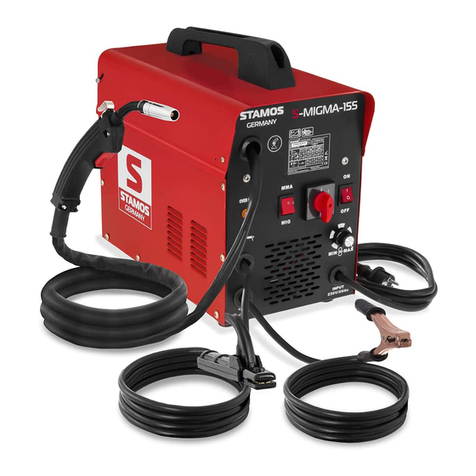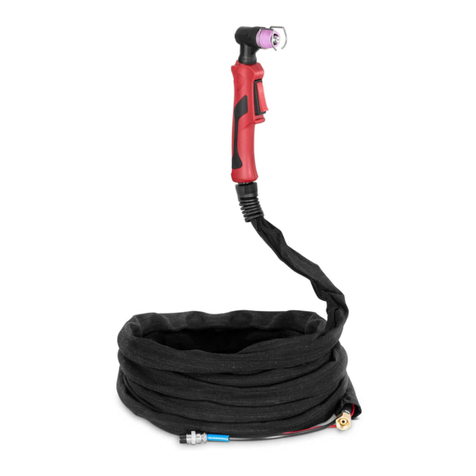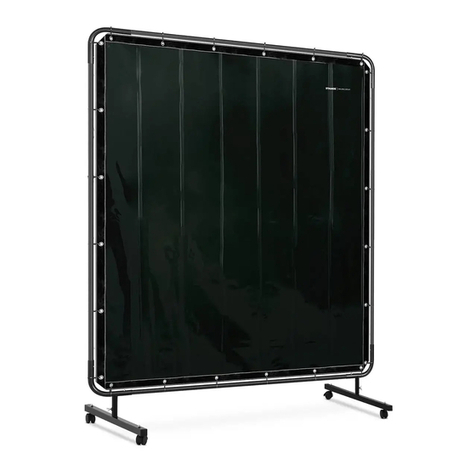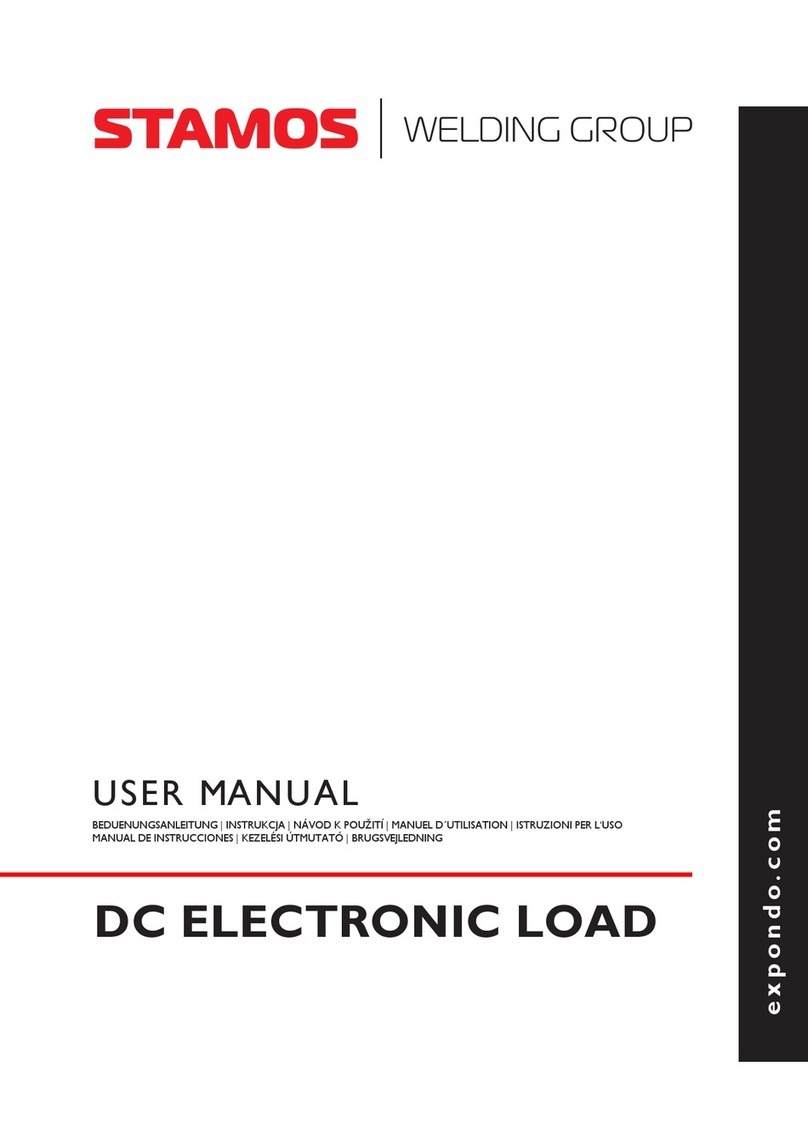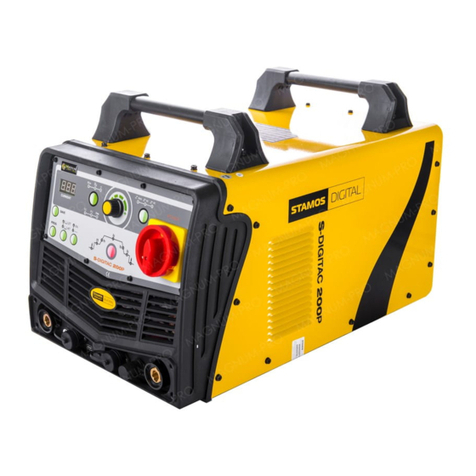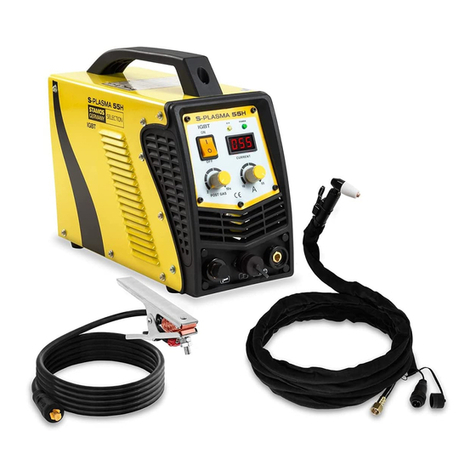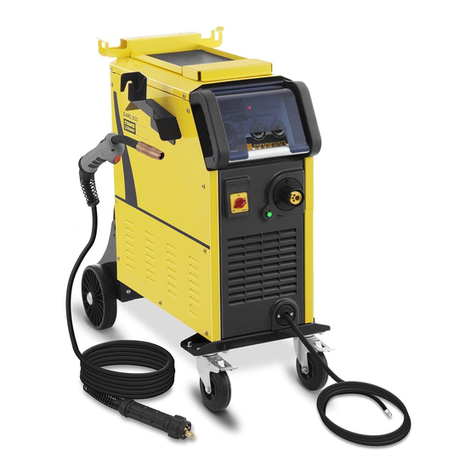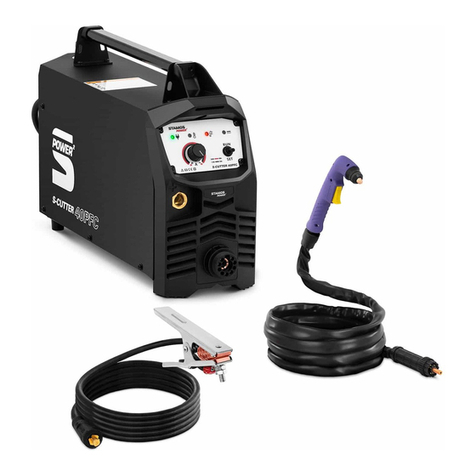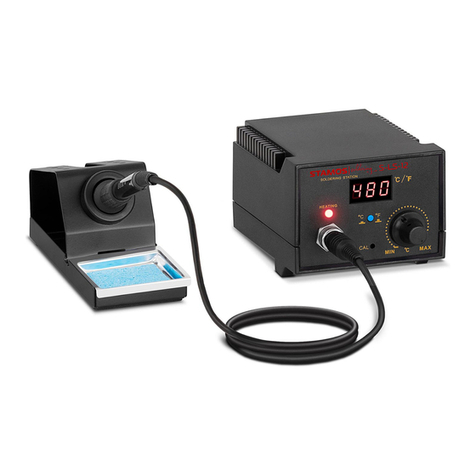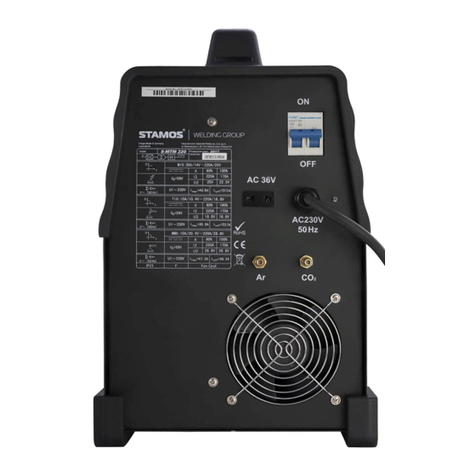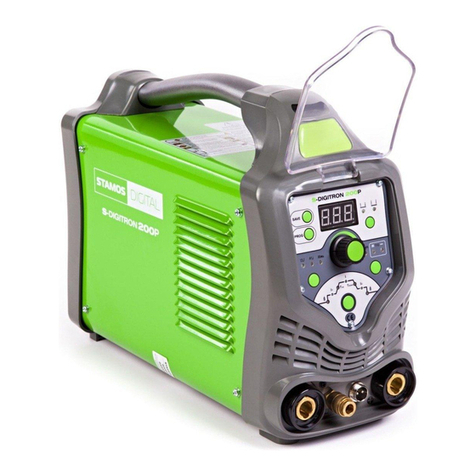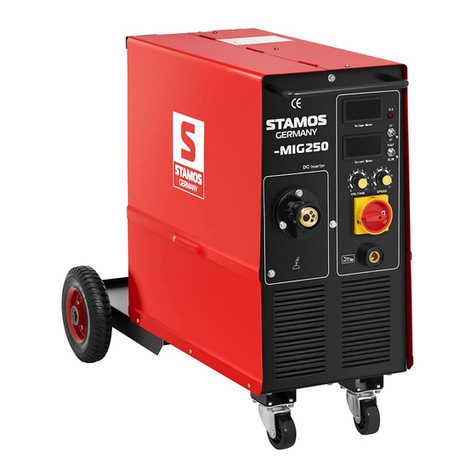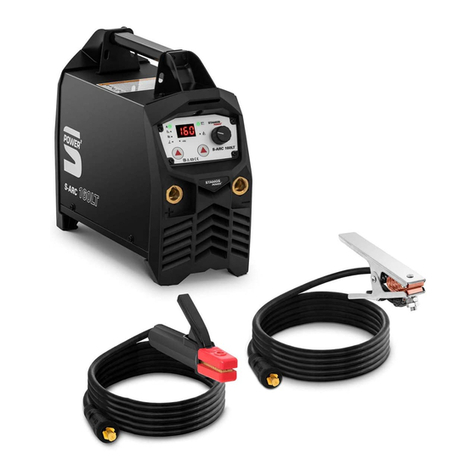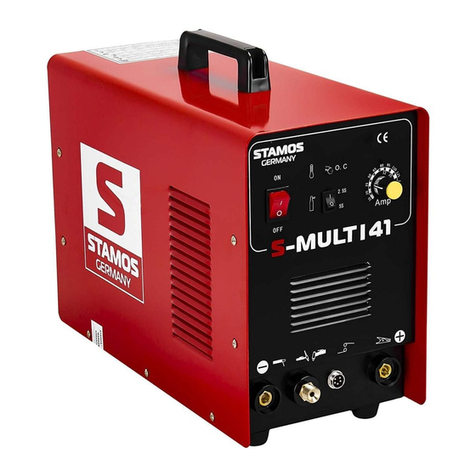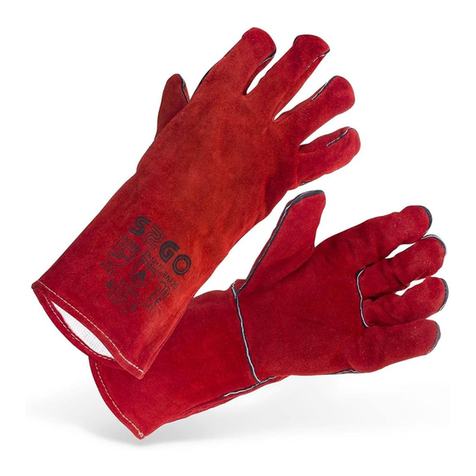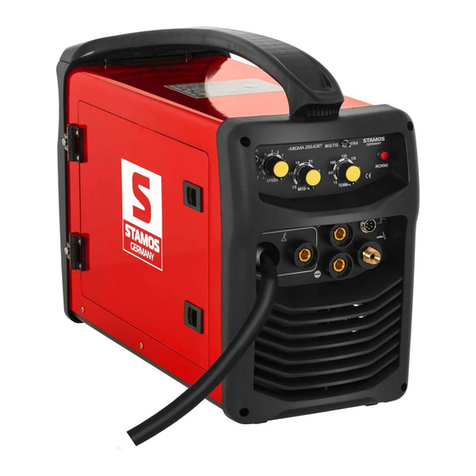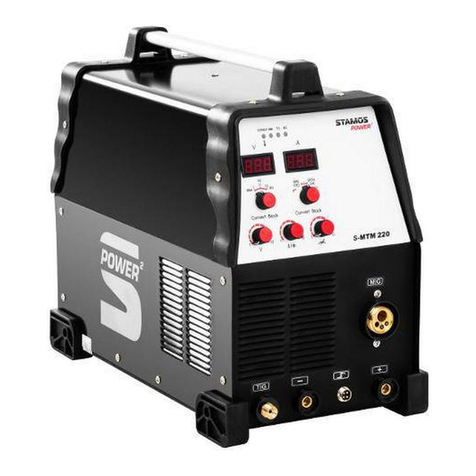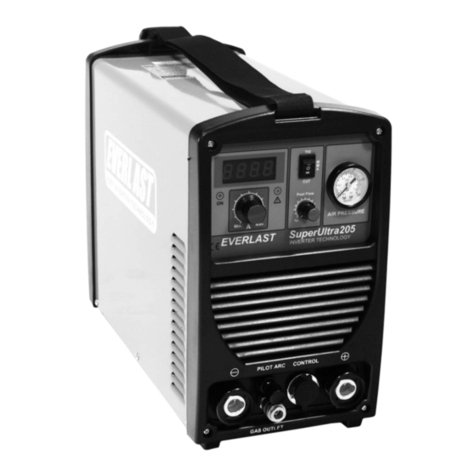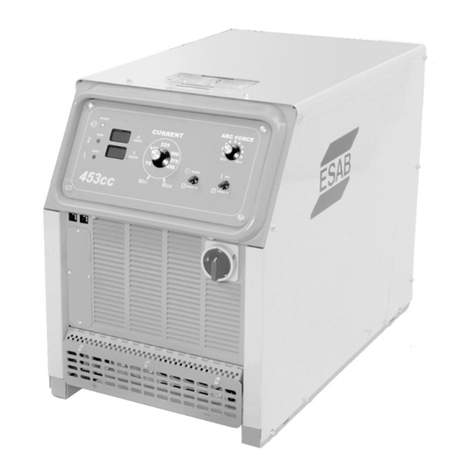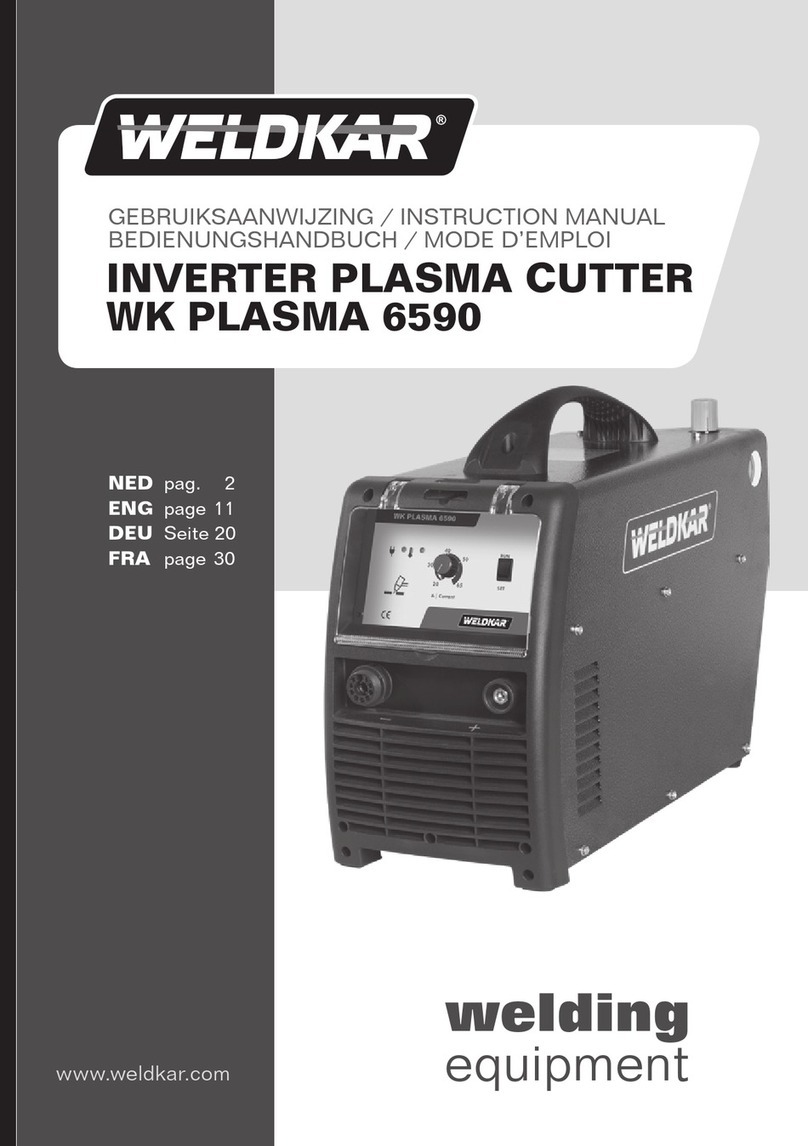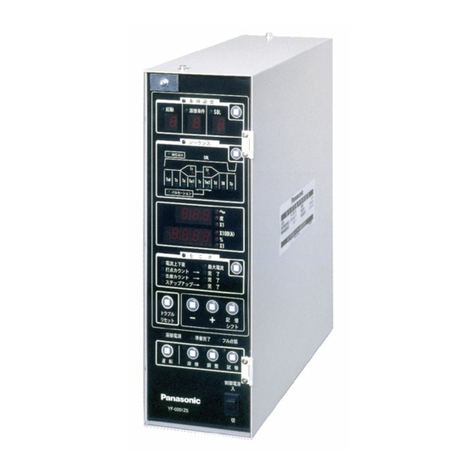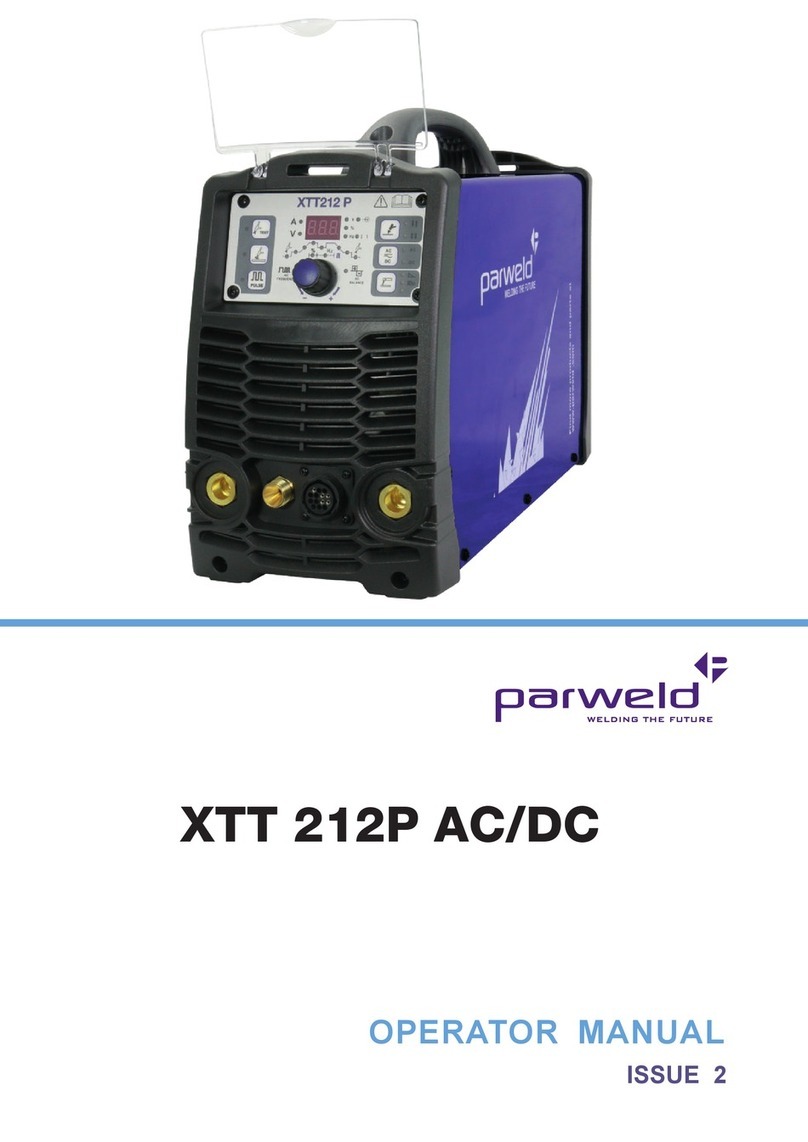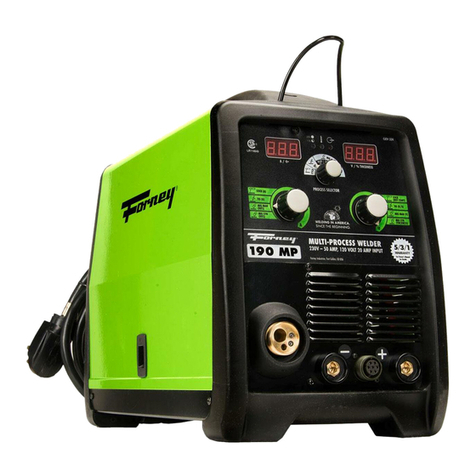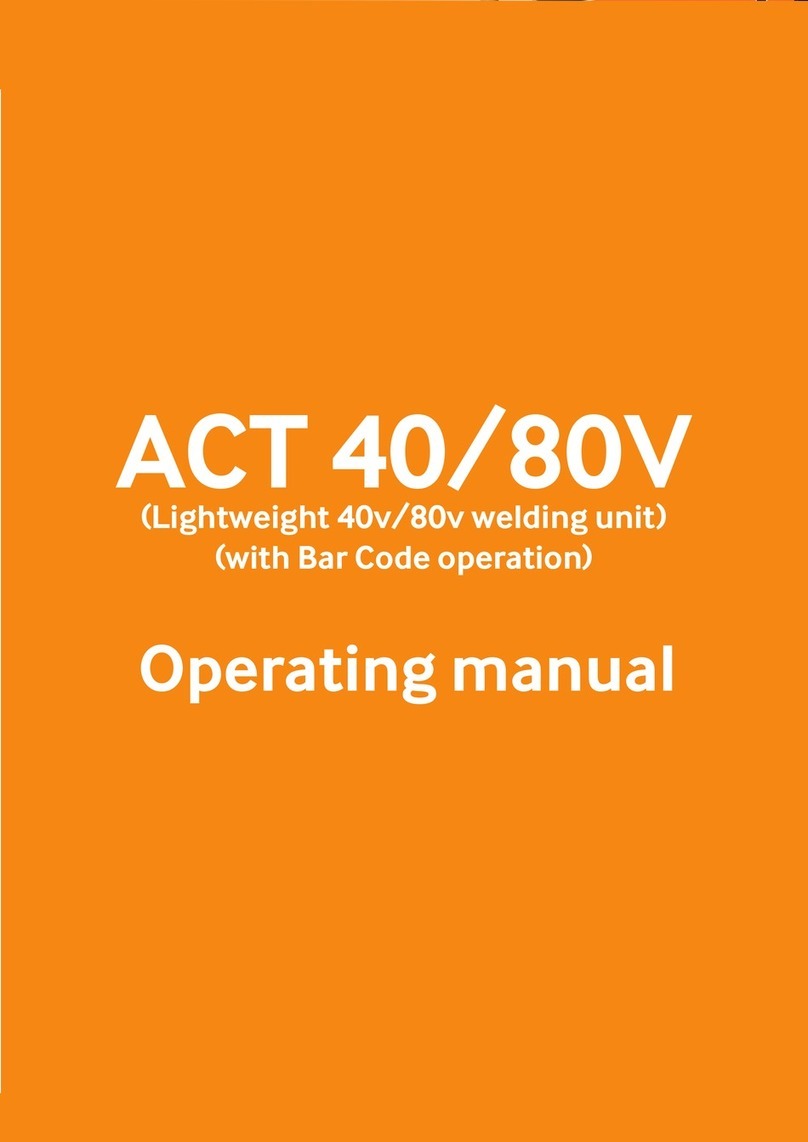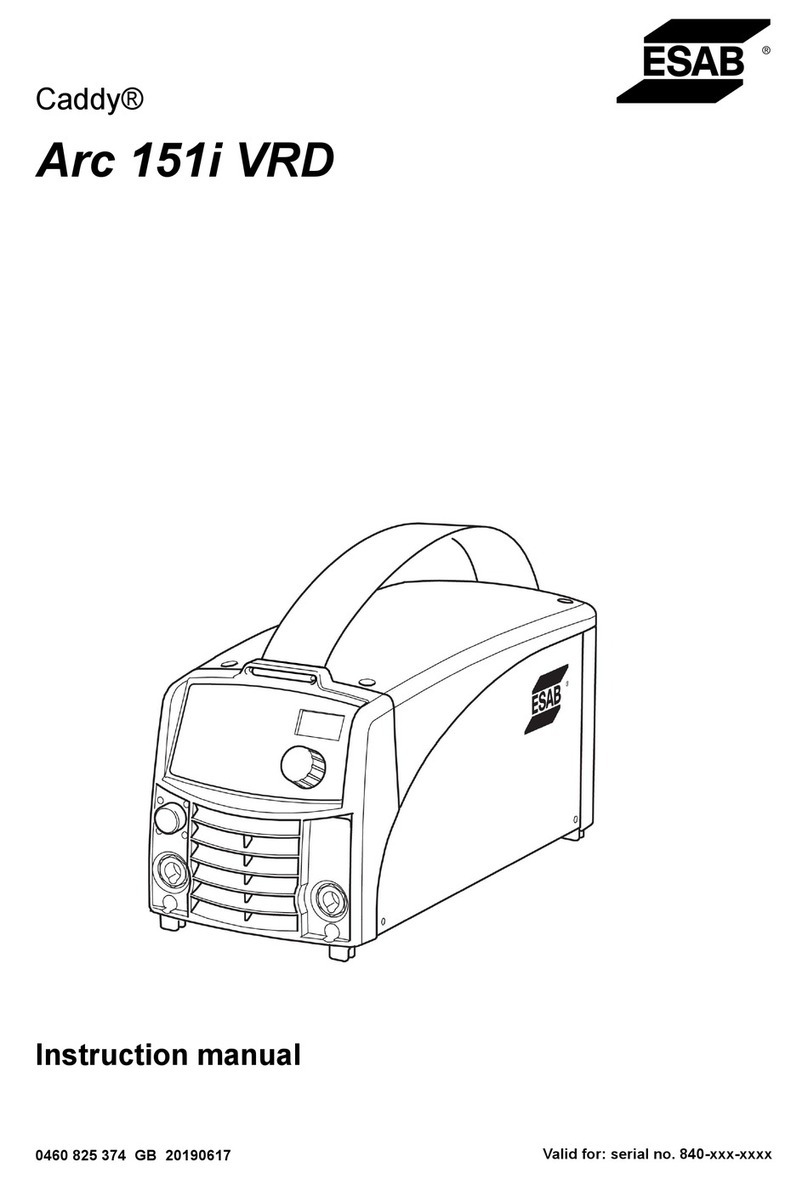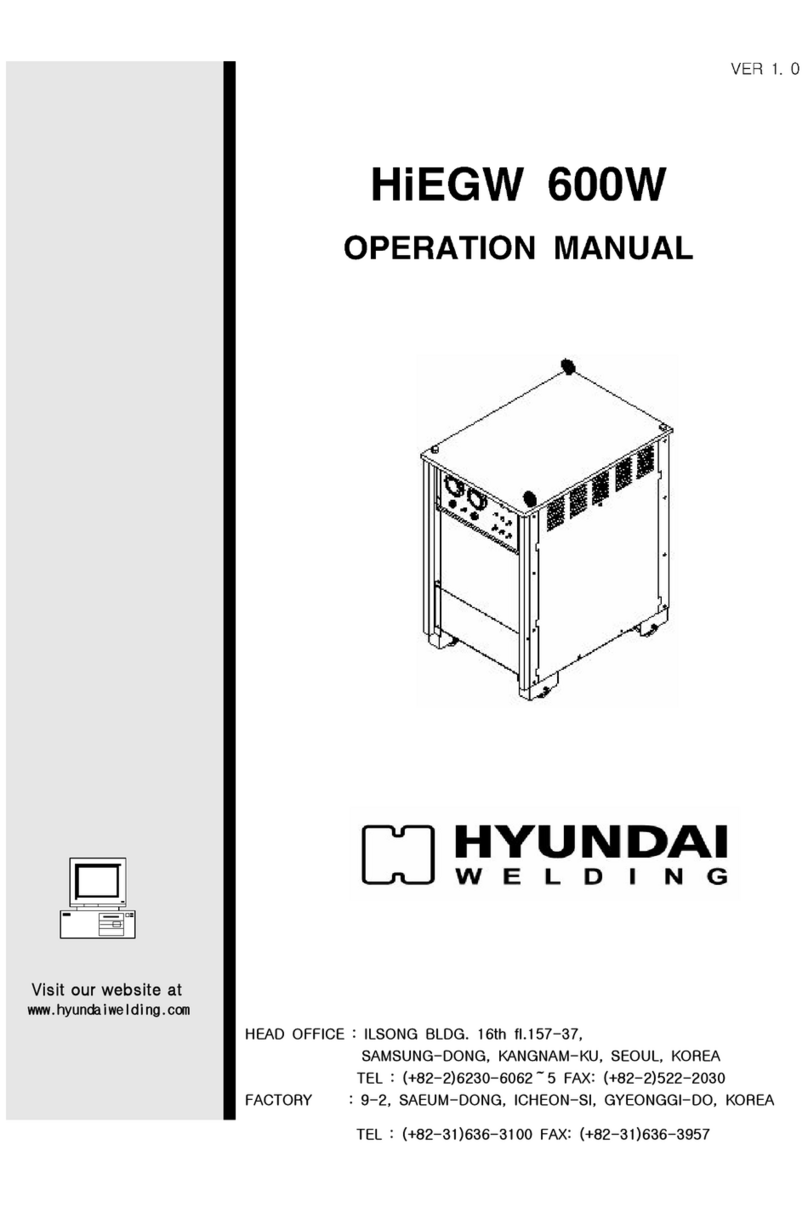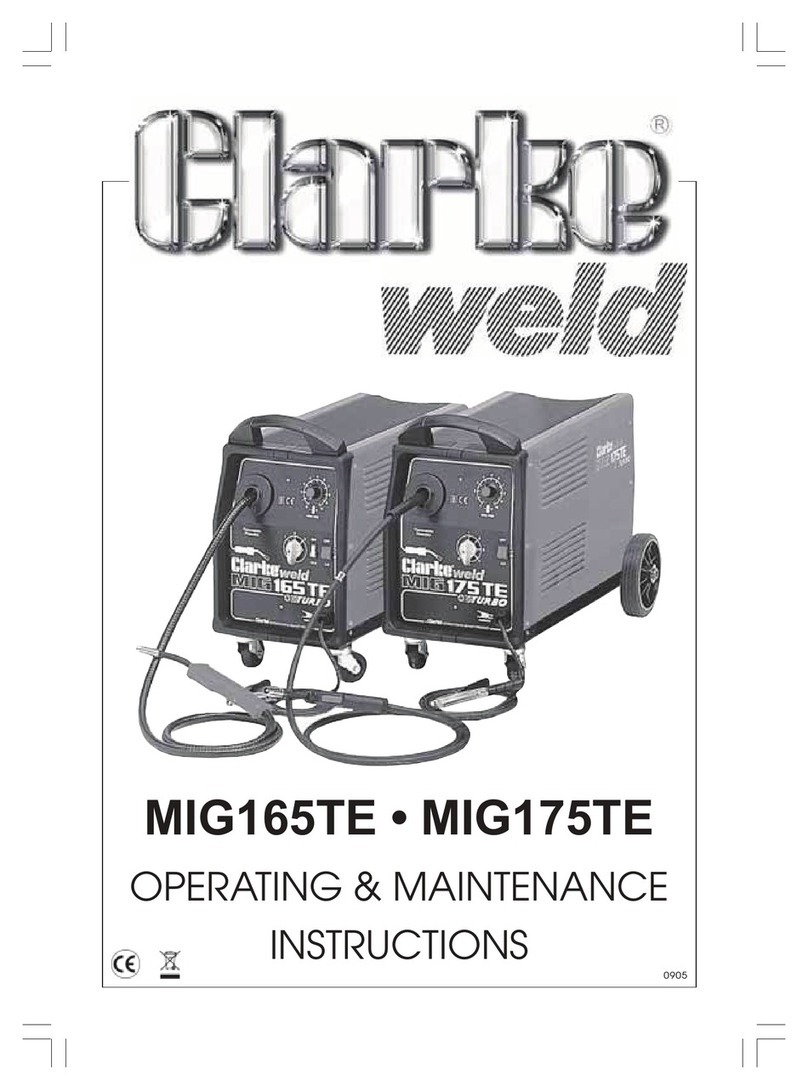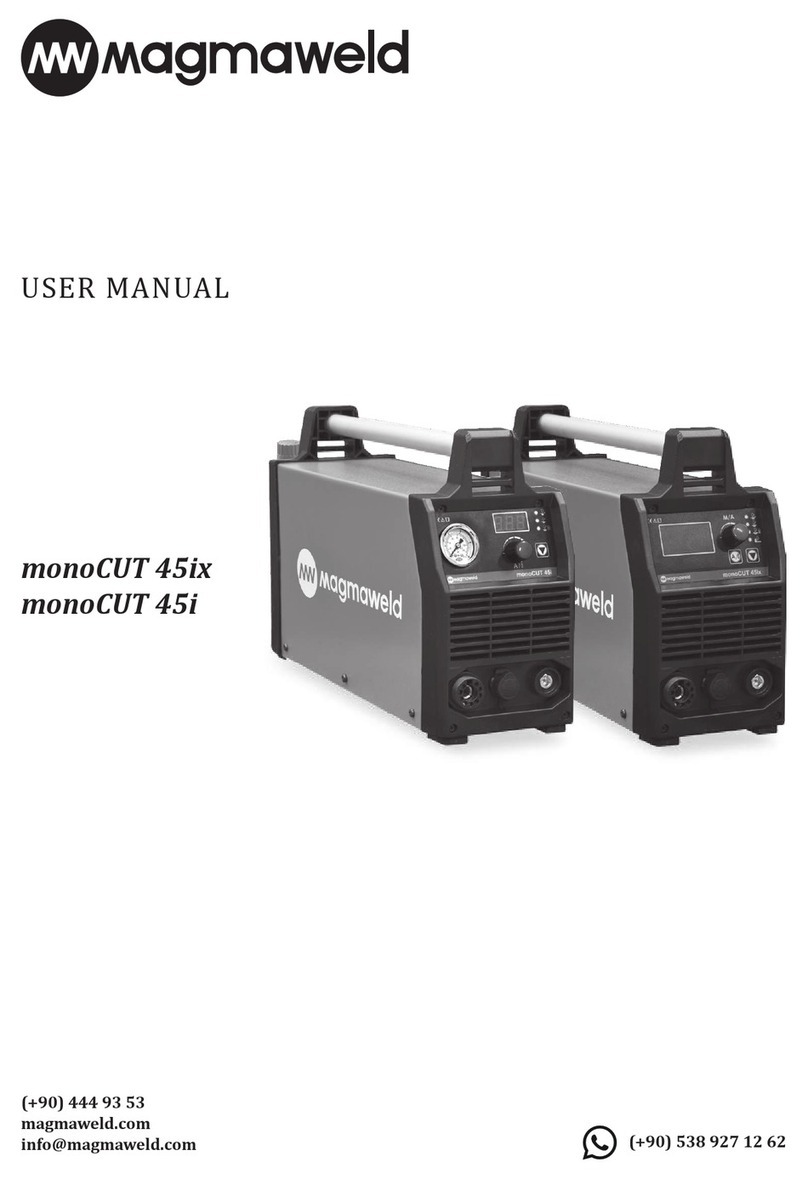
32
04.03.2021
EN
USER MANUAL
EN
The operation manual must be read carefully.
The product must be recycled.
Satises requirements of applicable safety
standards
Use full body protective clothes.
ATTENTION! Wear protective gloves.
Safety goggles must be worn.
Protective footwear must be worn.
ATTENTION! Hot surface may cause burns.
ATTENTION! Risk of re or explosion.
ATTENTION! Harmful fumes, danger of
poisoning. Gases and vapours may be hazardous
to health. Welding gases and vapours are
released during welding. Inhaling these
substances may be hazardous to health.
Use a welding mask with appropriate lter
shading.
CAUTION! Harmful welding arc radiation.
Do not touch the parts that are under voltage/
power.
PLEASE NOTE! Drawings in this manual are for
illustration purposes only and in some details may
dier from the actual product.
The original operation manual is in German. Other
language versions are translations from German.
1. TECHNICAL SPECIFICATIONS
2. GENERAL DESCRIPTION
The user manual is designed to aid safe and troublefree
use. The product is designed and manufactured in
accordance with strict technical guidelines, using state of
the art technologies and components and in compliance
with the most stringent quality standards.
DO NOT USE THE DEVICE UNLESS YOU HAVE
THOROUGHLY READ AND UNDERSTOOD THE
PRESENT USER MANUAL.
To extend the shelf life of the device and to ensure
trouble free operation, use it and perform maintenance
tasks in accordance with this user manual. The
technical data and specications in this user manual
are current. The manufacturer reserves the right to
make changes associated with quality improvements.
Taking into account technological progress and noise
reduction opportunities, the device was designed
to reduce noise emission risk to the minimum.
3. SAFETY OF USE
3.1. GENERAL NOTES
• Take care of your own safety and the one of third parties
by reading and strictly following the instructions,
included in the operating manual of the device.
• Only qualied and skilled personnel can be allowed to
start, operate, maintain and repair the machine.
• The machine must never be operated contrary to its
intended purpose.
3.2. SECURITY GUIDELINES FOR WORK
THAT CONSTITUTES A FIRE HAZARD
Preparation of the building and premises
for work that constitutes a re hazard:
• removal of all ammable materials and waste from
rooms and premises where work will be carried out;
• moving any ammable objects and non-ammable
objects in ammable packages away to a safe distance;
• materials that cannot be removed must be
secured against e.g. welding spatter by covering
them with e.g. metal sheets, drywall, etc.;
• check if materials or ammable objects
in surrounding rooms require protection;
• seal with non-ammable materials any
openings in installation, ventilation,
etc. located near the place of work;
• secure electric cables, gas or installation
pipes covered with ammable insulation
against welding spatter if they are within the
range of work that constitutes a re hazard;
• check that the planned work will not be carried
out in rooms that were painted using ammable
substances or where other ammable substances
were used on the day of planned work.
SPARKS MAY CAUSE A FIRE
Sparks produced by welding can cause res, explosions
and burns on exposed skin. During welding, it is necessary
to wear welding gloves and protective clothing. Remove or
secure any ammable materials and substances from the
place of work. Do not weld sealed containers or tanks in
which ammable liquids were stored.
ATTENTION! Read all safety warnings and all
instructions. Failure to follow the warnings and
instructions may result in an electric shock, re and/
or serious injury or death.
Parameter description Parameter value
Product name WELDING MACHINE
Model S-WIG-
MA 200
PRO UK
S-WIG
200
IGBT UK
Voltage/Frequency [V~/Hz] 230/50
Rated input current [A} 16 (MMA)
15.7 (TIG)
No-load voltage [V] 59 (MMA/TIG)
MMA welding current [A] 10-180
TIG welding current [A] 10-200
Welding current at 20% duty
cycle [A])
180 (MMA)
Welding current at 35% duty
cycle [A]
200 (TIG)
Welding current at 60% duty
cycle [A]
103 (MMA)
152 (TIG)
Welding current at 100% duty
cycle [A]
80 (MMA)
118 (TIG)
• Use guards for the welding operation sites
in order to protect other people from the
blinding light radiation or projections.
• Always wear earplugs or another hearing protection
to protect against excessive noise and to avoid
spatter entering the ears.
• Bystanders should be warned to not look at the arc.
3.5. PROTECTION AGAINST ELECTRIC SHOCK
ELECTRIC SHOCK CAN BE LETHAL!
• The power cable must be connected to the nearest
socket and placed in a practical and secure position.
Positioning the cable negligently in the room and on
a surface which was not checked must be avoided, as
it can lead to electrocution or re.
• Touching electrically charged elements can cause
electrocution or serious burns.
• The electrical arc and the working area are electrically
charged during the power ow.
• The device’s input circuit and inner power circuit are
also under voltage charge when the power supply
is turned on.
• The elements under the voltage charge must not be
touched.
• Dry, insulated gloves without any holes and
protective clothing must be worn at all times.
• Insulation mats or other insulation layers, big enough
as not to allow for body contact with an object or the
oor, must be placed on the oor.
• The electrical arc must not be touched.
• Electrical power must be shut down prior to cleaning
or electrode replacement.
• It must be checked if the earthing cable is properly
connected or the pin is correctly connected to the
earthed socket. Incorrectly connecting the earthing
can cause life or health hazard.
• The power cables must be regularly checked for
damage or lack of insulation. Damaged cables must
be replaced. Negligent insulation repair can cause
death or serious injury.
• The device must be turned o when it is not in use.
• The cable mustn’t be wrapped around the body.
• A welded object must be properly grounded.
• Only equipment in good condition can be used.
• Damaged device elements must be repaired or
replaced. Safety belts must be used when working
at height.
• All ttings and safety elements must be stored in
one place.
• From the moment of turning on the release, the
handle end must be kept away from the body.
• The chassis ground must be mounted to the welded
element or as close to it as possible (e.g. to a work
table).
THE DEVICE CAN STILL BE UNDER VOLTAGE UPON
FEEDER DISCONNECTION!
• The voltage in the input capacitor must be checked
upon turning o the device and disconnecting it
from the power source. One must make sure that the
voltage value is equal to zero. Otherwise, the device
elements must not be touched.
3.6. GASES AND FUMES
PLEASE NOTE! GAS MAY BE LETHAL OR DANGEROUS
TO HUMAN HEALTH!
• Always keep a certain distance from the gas outlet
• When welding, ensure good ventilation. Avoid
inhaling the gas.
Such containers or tanks must be rinsed before welding
to remove ammable liquids. Do not weld in the vicinity
of ammable gas, vapours or liquids. Fire equipment
(blankets, dry powder extinguisher or extinguishing foam)
must be placed near the workplace in an easily visible and
reachable place.
A CYLINDER MAY EXPLODE
Use only approved gas cylinders and a properly working
reducer. The cylinder should be transported, stored and
placed in a vertical position. Protect the cylinders from heat
sources, tipping over and mechanical damage. Maintain all
gas installation elements: cylinder, hose, ttings, reducer in
good condition.
WELDED MATERIALS CAN CAUSE BURNS
Never touch the welded components with parts of your
body without protection. When touching and moving
welded material, always use welding gloves and tongs.
3.3. PREPARATION OF WELDING WORK SITE
WELDING OPERATIONS MAY CAUSE FIRE OR
EXPLOSION!
• Strictly follow the occupational health and safety
regulations applicable to welding operations and
make sure to provide appropriate re extinguishers
at the welding work site.
• Never carry out welding operations in ammable
places that pose the risk of material ignition.
• It is prohibited to weld in the presence of an
explosive mixture of combustible gases, vapours,
mists or dust with air.
• Remove all ammable materials within 12 meters
from the welding operations site and if removal is
not possible, cover ammable materials with re
retardant covering.
• Use safety measures against sparks and glowing
metal particles.
• Make sure that sparks or hot metal splinters do
not penetrate through the slots or openings in the
coverings, shields or protective screens.
• Do not weld tanks or barrels that contain or have
contained ammable substances. Do not weld in the
vicinity of such containers and barrels.
• Do not weld pressure vessels, pipes of pressurised
installations or pressure trays.
• Always ensure adequate ventilation.
• It is recommended to take a stable position prior to
welding.
3.4. PERSONAL PROTECTION EQUIPMENT
ELECTRIC ARC RADIATION CAN CAUSE DAMAGE TO
EYES AND SKIN!
• When welding, wear clean, oil stain free protective
clothing made of non-ammable and nonconductive
materials (leather, thick cotton), leather gloves, high
boots and protective hood.
• Before welding remove all ammable or explosive
items, such as propane butane lighters or matches.
• Use facial protection (helmet or shield) and eye
protection, with a lter featuring a shade level
matching the sight of the welder and the welding
current. The safety standards suggest colouring
No. 9 (minimum No. 8) for each current below 300
A. A lower shield colouring can be used if the arc is
covered by the workpiece.
• Always use approved safety glasses with side
protection under the helmet or any other cover.





